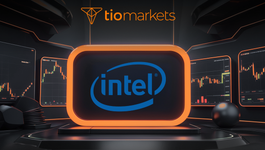ETFs and Trackers: What They Are and How They Work
BY TIOmarkets
|May 29, 2024Exchange-Traded Funds (ETFs) and trackers represent a cornerstone in the modern investment landscape, offering both novice and seasoned investors a pathway to diversify their portfolios. This article delves into the essence of ETFs and trackers, elucidating their operational mechanisms, benefits, and potential risks.
Understanding ETFs
At its core, an Exchange-Traded Fund (ETF) is a type of investment fund and exchange-traded product, i.e., they are traded on stock exchanges. ETFs hold assets such as stocks, commodities, or bonds and generally operate with an arbitrage mechanism designed to keep trading close to its net asset value, though deviations can occasionally occur.
How ETFs Work
ETFs amalgamate the valuation feature of a mutual fund, which is bought or sold at the end of each trading day for its net asset value, with the tradability aspect of a closed-end fund, which trades throughout the trading day at prices that may be more or less than its net asset value. Introduced in the early 1990s, ETFs have evolved to encompass various investment categories including broad market, sector-specific, and international investments.
Investors buy shares of ETFs, and these shares are then traded on public stock exchanges. The price of ETF shares fluctuates throughout the day, based on supply and demand dynamics, similar to the price movements of individual stocks. This makes ETFs highly liquid, allowing investors to buy or sell shares with ease.
Types of ETFs
ETFs come in various forms, catering to different investment strategies and preferences. Broadly categorized, there are equity ETFs, which track stock indices; fixed-income ETFs, focusing on bonds; commodity ETFs, which invest in physical goods like gold or oil; and specialty ETFs, which might focus on a specific industry or theme, such as renewable energy or technology.
Each type of ETF has its own set of characteristics, risks, and rewards, making it crucial for investors to conduct thorough research or consult with a financial advisor to align their investment choices with their financial goals and risk tolerance.
The Role of Trackers
Trackers are essentially another term for ETFs, particularly highlighting their role in tracking the performance of an index. They are designed to offer investors exposure to entire indices, sectors, or commodities, mirroring the performance of their benchmarks as closely as possible.
Benefits of Using Trackers
Trackers offer several advantages, including diversification, as they allow investors to gain exposure to a wide array of assets through a single transaction. This can significantly reduce the risk associated with investing in individual stocks. Additionally, trackers are known for their cost-effectiveness, typically having lower expense ratios compared to actively managed funds.
Another key benefit is transparency; most trackers disclose their holdings daily, providing investors with a clear view of where their money is invested. This level of transparency is less common in traditional mutual funds, where holdings might only be disclosed quarterly.
Risks Involved with Trackers
While trackers offer numerous benefits, they are not devoid of risks. Market risk is a primary concern, as the value of a tracker can decline in response to drops in the market or the specific index it tracks. Additionally, tracking error—the discrepancy between the performance of the tracker and its underlying index—can affect returns, especially in niche or less liquid markets.
Liquidity risk can also be a factor, particularly with less popular trackers that might not be as easily bought or sold in the market. Investors should also be mindful of the costs associated with buying and selling ETFs, including brokerage fees, which can erode returns over time.
Investing in ETFs and Trackers
Investing in ETFs and trackers can be a strategic move for diversifying investment portfolios. However, like any investment, it requires due diligence and an understanding of the associated risks and rewards.
How to Start Investing in ETFs
For those new to ETFs, starting with a broad-market ETF can be a prudent first step. This provides exposure to a wide range of sectors and companies, reducing the risk associated with individual stocks. It's also important to consider the expense ratio and trading volume of the ETF, as these factors can impact overall returns.
Investors should also set clear investment goals and time horizons, which can guide their choice of ETFs. For example, those with a long-term perspective may lean towards ETFs that track broad indices, while those seeking income might prefer ETFs that focus on dividend-paying stocks.
Key Considerations for Tracker Investments
When investing in trackers, it's crucial to understand the index being tracked and its composition. Investors should also be aware of the potential for tracking error and how it might affect their investment. Evaluating the liquidity of the tracker and any associated fees is also important for making informed investment decisions.
Finally, investors should consider how a tracker fits into their overall investment strategy and portfolio. Trackers can be an effective tool for achieving diversification, but they should be used as part of a balanced and well-thought-out investment plan.
ETFs vs. Mutual Funds
One common comparison in the investment world is between ETFs and mutual funds. While both offer diversified investment options, there are key differences between the two. Mutual funds are priced once a day at the net asset value (NAV), while ETFs are traded throughout the day on exchanges at market prices. This intraday trading feature of ETFs provides investors with flexibility in executing trades at different price points during the trading day.
Another distinction lies in how investors buy into these funds. Mutual funds are typically purchased directly from the fund company or through a broker, while ETFs are bought and sold on exchanges through brokerage accounts. This difference in trading mechanisms can impact the costs associated with each type of investment.
Furthermore, mutual funds are actively managed, meaning fund managers make decisions on buying and selling securities within the fund to meet its investment objectives. On the other hand, most ETFs are passively managed and aim to replicate the performance of a specific index. This passive management style often results in lower expense ratios for ETFs compared to actively managed mutual funds.
Benefits of Mutual Funds
Mutual funds offer professional management of investments, which can be appealing to investors who prefer to have experts making decisions on their behalf. Additionally, mutual funds are available in various categories, catering to different risk appetites and investment goals. This diversity allows investors to choose funds that align with their specific financial objectives.
Another advantage of mutual funds is the ability to set up automatic investment plans, where investors can regularly contribute a fixed amount to their fund holdings. This systematic investment approach can help in dollar-cost averaging and building wealth over time through disciplined investing.
Risks of Mutual Funds
Despite their benefits, mutual funds also come with risks. One significant risk is the potential for underperformance compared to the market or their benchmark indices. High management fees can eat into returns, especially if the fund does not deliver above-average performance. Additionally, mutual funds may have redemption fees or early withdrawal penalties, which can impact investors looking to liquidate their holdings quickly.
Another risk to consider is the lack of control over the individual securities within the fund. Investors in mutual funds rely on the fund manager's decisions, which may not always align with their personal investment strategies or risk tolerance levels.
Active vs. Passive Investing
When it comes to investing in ETFs and mutual funds, investors often encounter the debate between active and passive investing strategies. Active investing involves frequent buying and selling of securities in an attempt to outperform the market or a specific benchmark. This strategy relies on the expertise and research capabilities of fund managers to make investment decisions that beat the market.
On the other hand, passive investing follows a buy-and-hold approach, aiming to replicate the performance of a market index rather than beat it. Passive investors typically opt for index funds or ETFs that track specific indices, providing broad market exposure at a lower cost compared to actively managed funds.
Research has shown that over the long term, actively managed funds often struggle to outperform their benchmarks consistently. High fees, turnover costs, and the challenge of consistently picking winning investments contribute to this trend. In contrast, passive investing offers lower costs, tax efficiency, and the simplicity of tracking established indices.
Factors to Consider in Active vs. Passive Investing
When deciding between active and passive investing, investors should consider their investment goals, risk tolerance, and time horizon. Active investing may be suitable for those seeking potentially higher returns but are willing to take on more risk and be actively involved in managing their investments. Passive investing, on the other hand, is favored by investors looking for a more hands-off approach with lower costs and a focus on long-term market returns.
It's essential to evaluate the historical performance of active funds and passive index funds, taking into account fees, tax implications, and the consistency of returns. Additionally, understanding the impact of market conditions, economic trends, and fund management styles can help investors make informed decisions on which investment strategy aligns best with their financial objectives.
In conclusion, ETFs and trackers offer a versatile and accessible means for investors to diversify their portfolios. By understanding how these instruments work, their benefits, and potential risks, investors can make informed decisions that align with their investment objectives and risk tolerance.
Start Diversifying Your Portfolio with TIOmarkets
Ready to apply the insights from ETFs and trackers to your trading strategy? Join TIOmarkets, the top rated forex broker, and expand your investment horizons. With over 170,000 accounts opened across more than 170 countries, we provide you with the tools to trade over 300 instruments across 5 markets, including Forex, indices, stocks, commodities, and futures, all with low fees. Enhance your trading knowledge with our comprehensive educational resources and step-by-step guides. Don't miss the opportunity to diversify your portfolio—Create a Trading Account today and start your journey towards successful investing.

Risk disclaimer: CFDs are complex instruments and come with a high risk of losing money rapidly due to leverage. You should consider whether you understand how CFDs work and whether you can afford to take the high risk of losing your money. Never deposit more than you are prepared to lose. Professional client’s losses can exceed their deposit. Please see our risk warning policy and seek independent professional advice if you do not fully understand. This information is not directed or intended for distribution to or use by residents of certain countries/jurisdictions including, but not limited to, USA & OFAC. The Company holds the right to alter the aforementioned list of countries at its own discretion.
Join us on social media

Behind every blog post lies the combined experience of the people working at TIOmarkets. We are a team of dedicated industry professionals and financial markets enthusiasts committed to providing you with trading education and financial markets commentary. Our goal is to help empower you with the knowledge you need to trade in the markets effectively.
Related Posts





